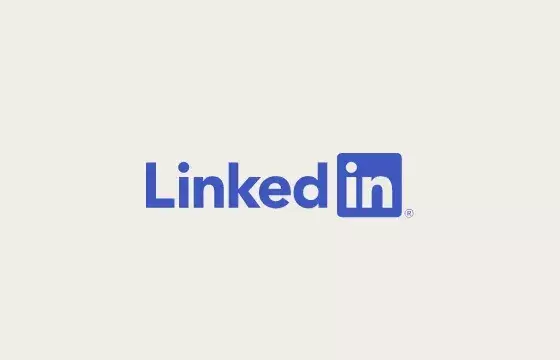In an age where digital impressions often weigh more than genuine connections, LinkedIn finds itself at a critical crossroads. Despite its reputation as a professional networking hub that champions authenticity, recent developments expose a persistent paradox: the platform’s struggle to maintain the integrity of its engagement ecosystem. As I scrutinize these moves, I am compelled to critique the platform’s ongoing efforts, their effectiveness, and their underlying motivations. Is LinkedIn sincerely committed to fostering authentic interactions, or are these steps superficial attempts to mask deeper flaws that still promote misleading metrics?
The recent addition of language disclosing constraints on automated commenting signals a noteworthy shift. However, this change appears more as a token gesture than a robust strategy. Officially, LinkedIn now admits the presence of automated engagement tactics, warning users that excessive or automated commenting might result in limited visibility. While this acknowledgment signifies a step forward, it inadvertently reveals how endemic the problem has become—so much so that the platform must explicitly mention automation in its rules. This honesty raises questions about the sincerity of past assurances, as well as about whether LinkedIn’s measures are enough to curb sophisticated schemes designed to inflate activity metrics.
The reality is that the platform’s incentives have long been misaligned. Engagement metrics are the lifeblood of social media success, and for LinkedIn, higher activity translates to more attractive algorithms and increased user engagement. Therefore, any move to clamp down on artificial activity runs counter to these incentives. It’s easy to see why platform operators might hesitate—artificial engagement drives visibility, user interactions, and ultimately, advertising revenue. If LinkedIn were truly committed to fostering a quality-driven environment, we’d expect more aggressive and transparent enforcement—not just a disclaimer buried in policy updates.
The Illusion of Authenticity and Its Consequences
This semi-covert dance with engagement pods, AI-generated comments, and automation is more than just a technical problem. It erodes trust among users, who may begin to question the authenticity of their professional network. When the news surface that many “interactions” are artificially inflated, it damages the credibility not only of individual profiles but of the platform as a whole.
What’s more troubling is the ongoing complication introduced by coordinated efforts that operate just off-platform or through third-party services. These practices are notoriously difficult to detect and police due to their evolving sophistication. LinkedIn’s acknowledgment of these issues, paired with vague promises of future enforcement, suggests a reactive rather than proactive approach. Instead of leading the fight against deceptive engagement, the platform appears to be playing catch-up, trying to patch vulnerabilities as they become public scandals rather than preventing them altogether.
This pattern demonstrates a fundamental flaw: the platform’s failure to prioritize authenticity over activity. While it publicly aims to maintain a safe and professional environment, the underlying mechanism rewards quantity over quality. This creates a culture where superficial connections and artificially inflated metrics are normalized, skewing perceptions of influence and professional value.
Is Enforcement a Real Priority or Just a Public Relations Tactic?
Another aspect worth critical reflection is LinkedIn’s willingness to enforce its policies in practice. Threatening to limit comments and suppress automated activity is a positive signal, but questions remain about the platform’s capacity and willingness to follow through. Given that the social media landscape often prioritizes engagement metrics as key revenue drivers, enforcement can easily become a matter of optics.
It’s conceivable that some of the recent developments are motivated as much by reputation management as genuine user protection. By publicly committing to crack down on automation, LinkedIn attempts to project an image of integrity and control, all while avoiding the more challenging task of deeply integrating proactive detection and enforcement measures. Historically, similar platforms have been criticized for ignoring the proliferation of fake profiles and engagement practices, sometimes because doing so benefits their bottom line.
Furthermore, the existence of engagement pods and mass automation—often coordinated off-platform—complicates enforcement efforts. The invisibility of these practices means that technical solutions alone cannot suffice. To genuinely turn the tide, LinkedIn would need to pursue legal avenues, partner with authorities, or develop sophisticated detection algorithms that can identify patterns beyond simple thresholds. Whether they are willing to make this investment remains an open question.
The Broader Implications: Trust, Authenticity, and Long-Term Viability
Ultimately, the core issue extends beyond policies and enforcement. It’s about the fundamental trust that users place in the platform. If professionals sense that a large portion of engagement is manufactured, it diminishes the platform’s value as a genuine networking space. This, in turn, impacts branding, recruitment, and professional growth opportunities—key reasons many users are on LinkedIn in the first place.
The platform’s recent acknowledgment of and attempts to combat fake engagement represent a step in the right direction—yet they are insufficient if not paired with more comprehensive and transparent efforts. Building a thriving ecosystem of authentic interactions requires more than statements in policies; it demands systemic changes, technological innovation, and a cultural shift that rewards genuine connections over hollow metrics.
In the end, LinkedIn faces a critical test: will it truly prioritize integrity and authenticity, or will it continue to navigate the balance cautiously, sacrificing long-term trust for short-term engagement gains? The choices it makes now will shape its reputation and relevance in the evolving world of digital professionalism.

